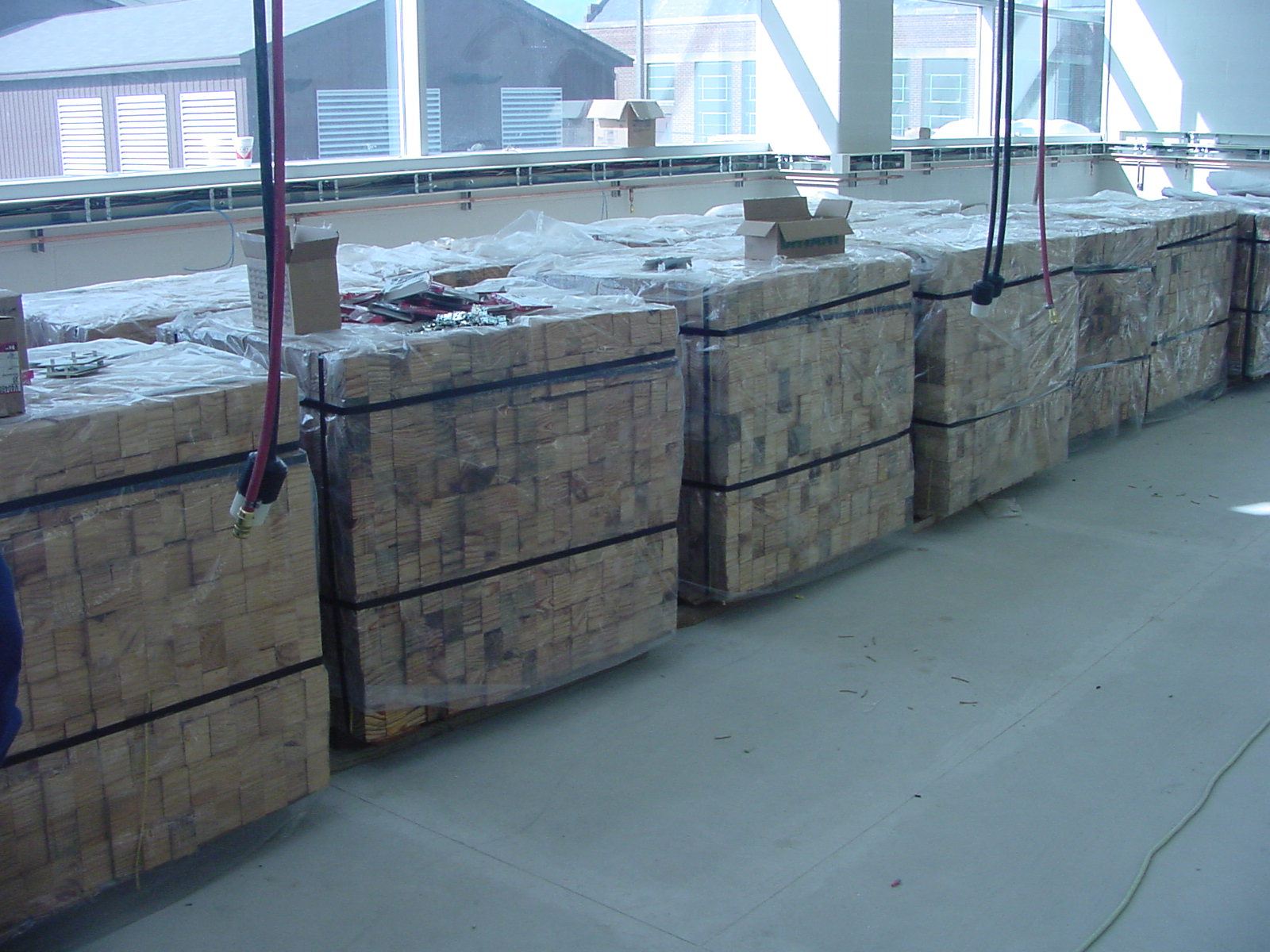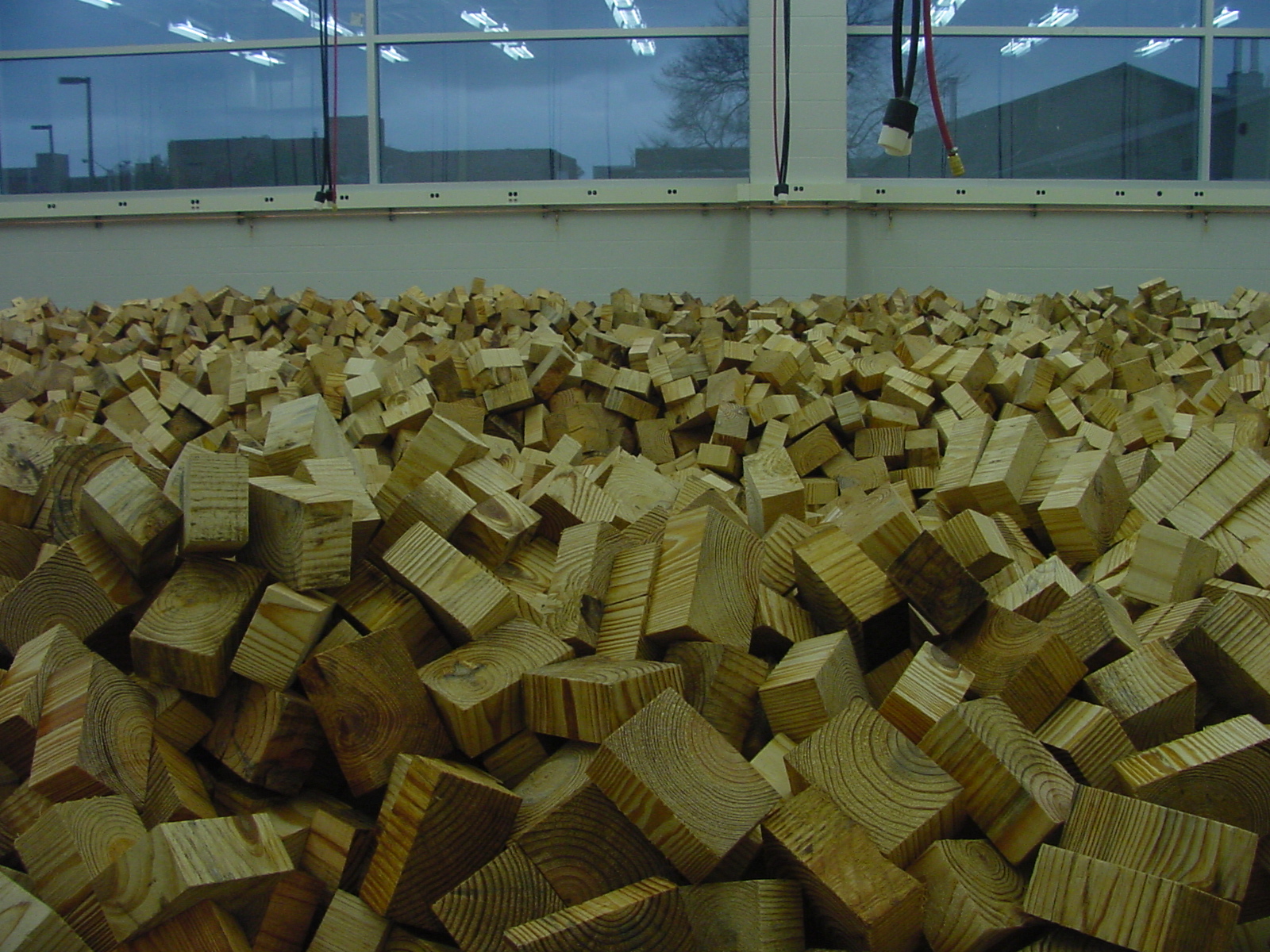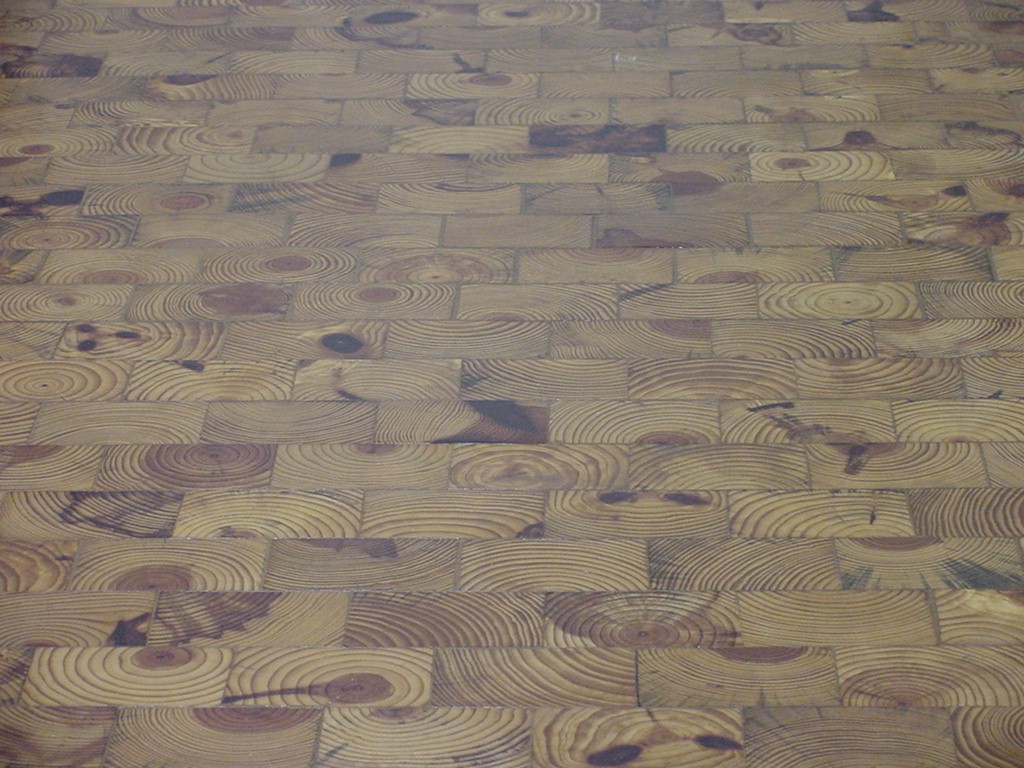Our Wood Floor
One question we always seem to get from customers is, "Why a wood floor in a machine shop of all places?" The wood floor in the machine shop is as practical as it is beautiful and traditional. The wood floor has many functions and is an essential part of the shop. Some of these functions are:
- The wood protects delicate parts, measurement equipment, and precision machine tools by absorbing impact energy if these items are accidentally dropped. That is, the wood serves as a cushion as opposed to the hard and potentially damaging surface of other industrial flooring materials such as concrete or tile. While care and caution are taken with all items, accidents do occasionally happen and the cushioning effect of the floor protects against costly damage.
- The wood floor absorbs vibration created by operating machine tools. This results in less noise and vibration being transmitted by the machine tools into the building and neighboring machine tools.
- The wood floor is able to be cleaned faster than most industrial floorings, such as concrete, due to its smooth, non-porous surface.
- In the unlikely event of damage to the floor, it can be repaired by removing and replacing the damaged blocks.
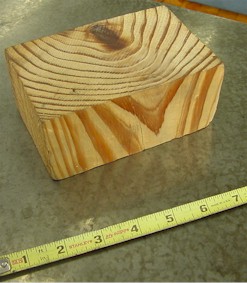 The other question we usually get is, "How was the floor constructed?" As you may
have noticed, the wood floor in the machine shop appears quite different than the
hardwood flooring found in many residential homes. The first distinction is that
the floor in the machine shop is an industrial flooring system. The floor is constructed
from blocks of treated southern yellow pine as shown in the inset. When you look
down on the floor, you see the rings of the end-grain of the wood. Unlike residential
floors, the end-grain faces up in an industrial floor as the wood is stronger in the
end grain direction. This strength is needed when heavy loads such as milling machines
and lathes are placed on the floor. Each block measures 3.5 inches by 5.5 inches.
The block is 2.5 inches tall. So when you visit the shop, you are actually standing
on 2.5 inches of solid wood. Each block is spaced approximately 0.15 inches apart
from each other. During the assembly of the floor, this space was packed with a cork
and wood particle mixture. This mixture absorbs vibration and thereby prevents this
vibration from transmitting to adjacent blocks. The mixture also allows the floor
to expand and contract as the seasonal humidity levels change. After the spaces between
all of the blocks were packed with the cork mixture, the floor was then sanded and
sealed using several coats of a clear epoxy sealant. Presently, the floor is polished
regularly to maintain its glassy look.
The other question we usually get is, "How was the floor constructed?" As you may
have noticed, the wood floor in the machine shop appears quite different than the
hardwood flooring found in many residential homes. The first distinction is that
the floor in the machine shop is an industrial flooring system. The floor is constructed
from blocks of treated southern yellow pine as shown in the inset. When you look
down on the floor, you see the rings of the end-grain of the wood. Unlike residential
floors, the end-grain faces up in an industrial floor as the wood is stronger in the
end grain direction. This strength is needed when heavy loads such as milling machines
and lathes are placed on the floor. Each block measures 3.5 inches by 5.5 inches.
The block is 2.5 inches tall. So when you visit the shop, you are actually standing
on 2.5 inches of solid wood. Each block is spaced approximately 0.15 inches apart
from each other. During the assembly of the floor, this space was packed with a cork
and wood particle mixture. This mixture absorbs vibration and thereby prevents this
vibration from transmitting to adjacent blocks. The mixture also allows the floor
to expand and contract as the seasonal humidity levels change. After the spaces between
all of the blocks were packed with the cork mixture, the floor was then sanded and
sealed using several coats of a clear epoxy sealant. Presently, the floor is polished
regularly to maintain its glassy look.
Historical Note: Traditionally, instrument and precision-machine shop floors have been made of wood for the very same reasons listed above. It should also be noted that we have left behind our previous wood floor in the Old Physics and Astronomy Building after over 50 years of service and still looking beautiful.
Assembly of the wood floor in the new Physics and Astronomy Machine Shop during the construction of the Biomedical Physical Sciences Building (circa January 2002).
The Machine Shop's wood floor was installed by Kaswell Flooring Systems.
|
|
|
|
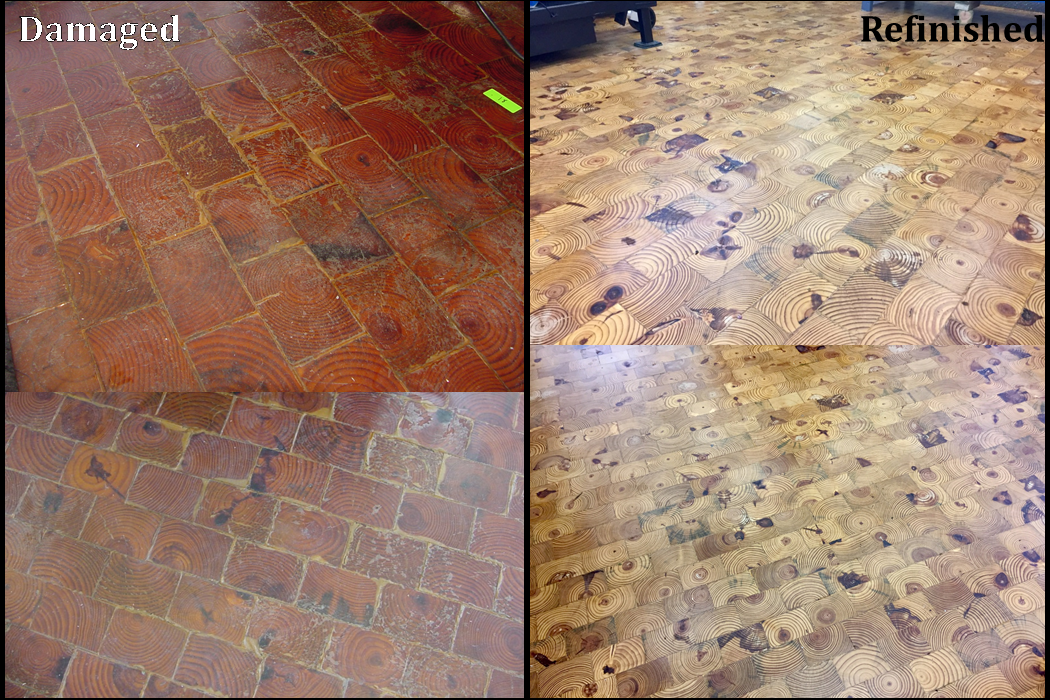
In January 2014, the Machine Shop's wood floor sustained considerable damage after a broken water pipe flooded much of the area at depths ranging from a sizeable fraction of an inch to over two inches. The water found its way into small imperfections in the finish and caused swelling in the wood underneath, which led to further damage to the finish layer, which then was unable to protect against future wear and tear.
In early 2016, after consultation with Dr. Norm Kaswell of Kaswell Flooring Systems (the original installers), the entire floor was refurbished by Foster Specialty Floors.
This involved moving all equipment out of the Machine Shop and back in again weeks later, after the new floor finish was stable.
